Affiliate links on Android Authority may earn us a commission. Learn more.
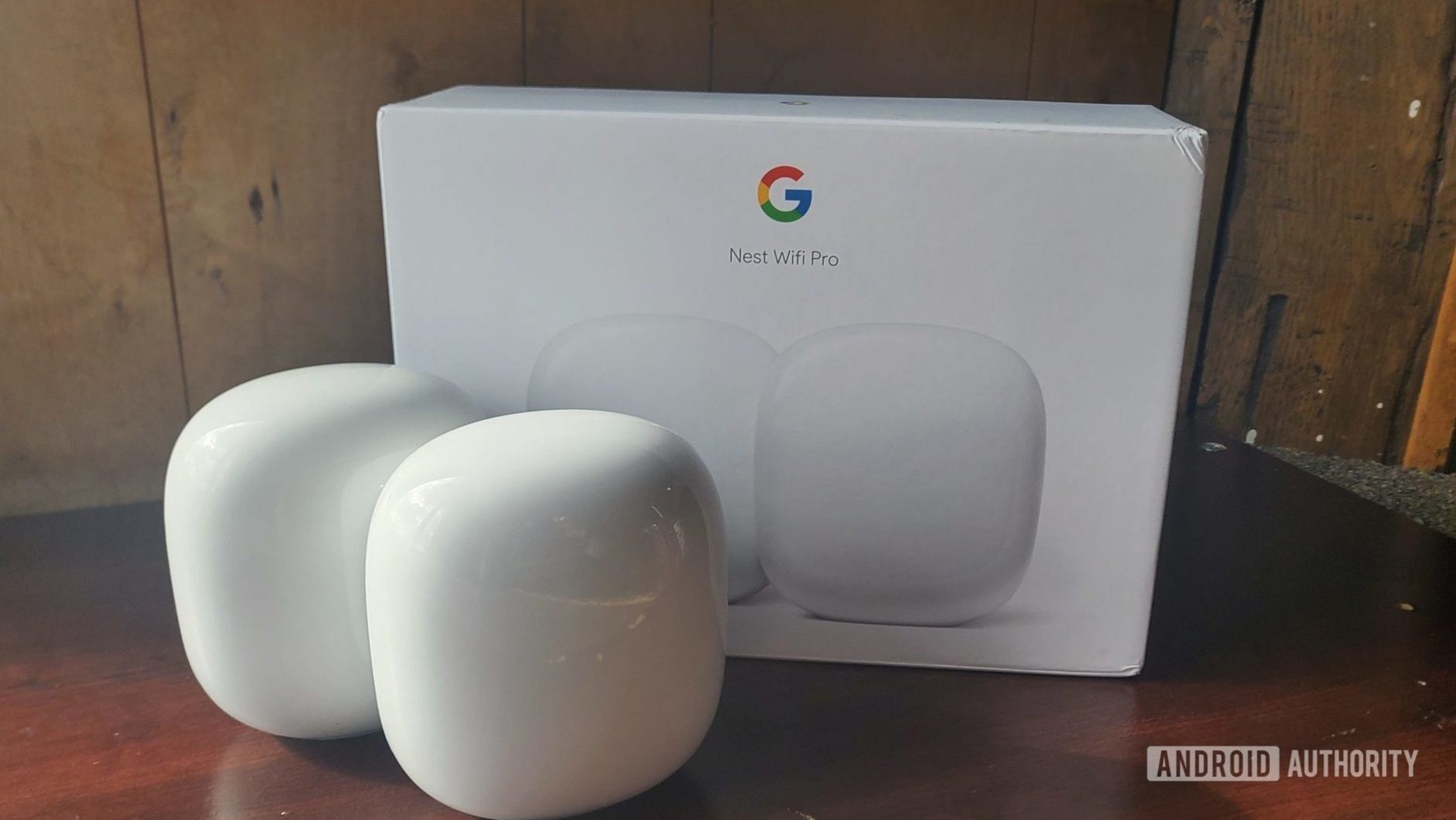


Google Nest Wifi Pro
What we like
What we don't like

Google Nest Wifi Pro
The Google Nest Wifi Pro first arrived in late 2022, replacing the aging Google Nest Wifi. The Nest Wifi Pro brings quite a few improvements to its predecessor, including the addition of Wi-Fi 6E. It’s not all upgrades, however. The Nest Wifi Pro ditches the built-in Google Assistant speakers found in its predecessor. Is what Google’s latest router gains worth what it has lost? Let’s find out in our Google Nest Wifi Pro review.
Update, May 2023: Added new links, and improved the article to remove outdated references.
What you need to know about the Google Nest Wifi Pro
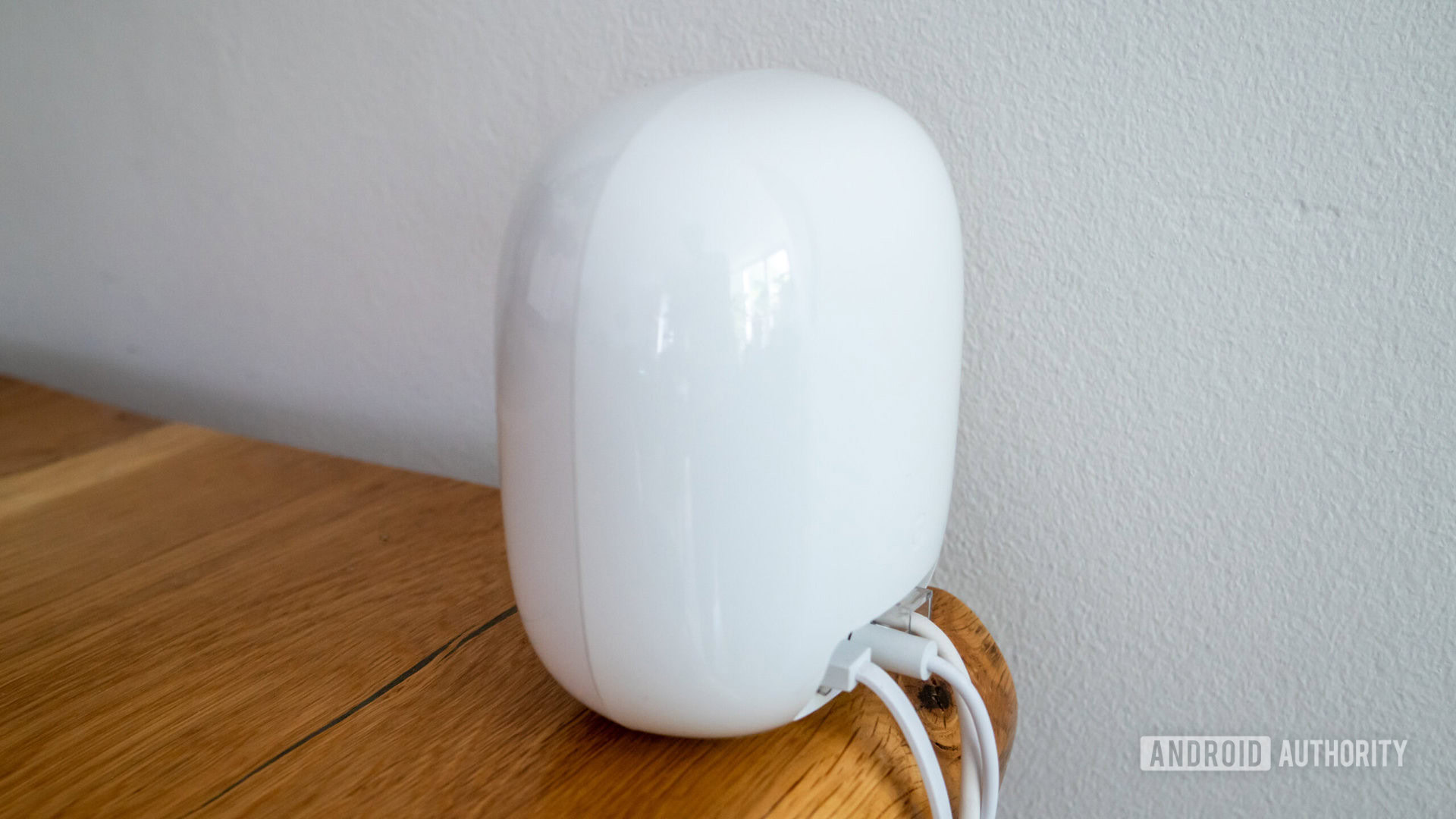
- Google Nest Wifi Pro (1-pack): $199.99 / £189.99 / €219.99
- Google Nest Wifi Pro (2-pack): $299.99 / €329.99
- Google Nest Wifi Pro (3-pack): $399.99 / £379.99
The Google Nest Wifi Pro is a follow-up to the Nest Wifi (2nd gen). Like all of Google’s previous routers, the Nest Wifi Pro is a mesh router. In short, a mesh router uses multiple nodes to extend your network evenly across your home or business. It also significantly reduces weak zones that are typical of traditional routers. The Pro supports up to 2,200 sq ft per router, though having more than one router in a smaller home can still be extremely beneficial for reducing weak spots.
The Nest Wifi Pro makes some pretty big changes compared to its predecessor, with the most obvious being the aforementioned addition of Wi-Fi 6 and 6E support. It is theoretically capable of speeds up to 5.4Gbps, over double the 2.2Gbps theoretical maximum of the Google Nest Wifi. Keep in mind real-world speeds never get anywhere close to that.
In reality, you don’t have granular control over how the router connects each device. The tri-band router also automatically switches between 2.5GHz, 5GHz, and a single 6GHz band. It’s also worth mentioning the 6GHz band is primarily intended for communication between the nodes. It is possible to connect compatible devices directly to the 6GHz band, but in most cases, you’ll probably be better off on 2.5 or 5GHz as we’ll explain a bit later in this review.
The Nest Wifi Pro’s design is also quite a bit different from the 2nd gen Nest Wifi. The 2019 Nest Wifi had one main router that acted as the brains of the network, backed by either further Nest Wifi units or cheaper extenders called Nest Wifi Points. The Points had no ethernet access but instead doubled as Google Assistant speakers. The Nest Wi-Fi Pro does away with all of that.
If you have multiple units, any of them can be your main router, with the others acting as extenders. The nodes are a tad bigger than the Wifi Nest router and larger again compared to the Points, coming in at a little over five inches tall and a tad over three inches wide. While the Nest Wifi hardware was perfectly rounded, the Pro has rounded edges but a slightly boxier design.
The Google Nest Wifi Pro brings plenty of new features, though it also removes a few extras like built-in Google Assistant speakers.
Another major change is the lack of smart speaker functionality. The lack of an audio setup like the Nest Wifi Points means you can’t use any of Google’s Pro-tier routers as stand-ins for a Google Nest speaker. On the plus side, the Nest Wifi system only had ethernet ports on the main routers, not the ports.
However, now that the nodes are always identical, the guaranteed two ethernet ports per node open up extra opportunities due to their ethernet ports. First, for those that want faster communication between the nodes, you can set up a wireless backhaul with the Pro. Doing this lets the nodes communicate directly, instead of relying on the 6GHz spectrum. The extra ports can also be useful for bridges and other wired smart home devices.
Most mesh routers on the market come in simple colors like gray, white, black, or some combination. Google goes a very different route with its natural earth tones. There are four different colors to pick from: Snow (pictured), Linen, Fog, and Lemongrass.
The Google Nest Wifi Pro starts at $200 for a single router and goes as high as $400 for the three-pack. You can find the Wifi Pro in all its configurations at major retailers including Amazon, Best Buy, and directly from Google. Typically 6E-capable routers start around $400 and can easily go as high as $1,000, so Google is aiming at a more affordable price point with the Nest Wifi Pro.
If you’re on a tight budget but absolutely want Wi-Fi 6E support, you’ll find that the Pro offers similar performance and features for less. There’s just one elephant to address — Multi-Gig support. The Pro’s ethernet ports are capped at one Gigabit, which for most of us, isn’t going to be a problem. For those with faster connections, you might want to consider another router if you want to utilize your ISP to its fullest.
What’s good?

It may have “Pro” in the name, but the Nest Wifi Pro is all about simplicity. This all starts with the app experience. Setup and management of the router are conducted entirely from the Google Home app. One advantage to this is you’re likely already familiar with this setup, especially if you’ve used other Google devices like Chromecast and Nest speakers.
Simplicity is core to the Nest Wifi Pro experience. You can get it unboxed and set up in less than 20 minutes.
All you need to do is check for a new device in the Home app, click on the automated wizard, and follow the on-screen prompts. Setting up the two-node configuration of the Nest Pro Wifi took me all of twenty minutes, including the time it took to update the devices.
We do want to mention that the Nest Pro is managed by cloud software, as is typical of other higher-end routers. Google’s software prioritizes video calls and other critical activities, and you can’t override its optimizations. On the bright side, you can disable them completely if privacy is a concern.
While the Home app is pretty basic, it allows for some slightly more advanced features such as WPA3, IPv6, DHCP IP reservations, and enabling 160MHz channel on the 5GHz band for better performance on compatible device. It also makes it easy to set up features like Parental controls and guest Wi-Fi sharing.
The Nest Wifi Pro makes it easy to create a network specifically for your guests, leaving your personal devices protected from prying eyes on the network. You can even display a QR code on your Android device or a Nest Hub, allowing the guest to quickly scan the QR code as a way to log in faster.
The Parental Controls can be easily set up from the Home app, but do keep in mind that they are a bit limited. You can turn on Google’s default safe search for select devices, you can pause them, and you can create special routines like bedtime for automatic pausing at certain points in the day. Those who want deeper control over what their kids can access on the web are going to need to look for a software solution if they still want to consider picking up the Nest Wifi Pro.
Google’s latest routers are no longer able to double as smart speakers, but you can use voice commands for certain network functions via a Google Assistant-capable speaker or smartphone. I particularly liked the ability to pause my kid’s devices using a simple voice command, though you can also get other basic usage stats as well.
Aside from Nest speakers and phones, the Google Nest Wifi Pro will also play nicely with most of your current and future smart home gadgets. The Nest Wifi Pro is a Thread router and fully supports the new Matter smart home protocol. Although the standard is still in its infancy, it’s quickly becoming the standard in smart home technology, so we’re happy to see Google fully embracing it here. If smart home compatibility is important to you, this is a big win for the Google Nest Wifi Pro.
For those with slower connections, you’ll also want to take note of the Google Nest Wifi Pro’s ability to prioritize a single device. The main appeal for single-device prioritization is work from home, which is exactly what I used it for in my tests. I ran a few speed tests with priority on and off. I found that during certain parts of the day, the prioritization on my main laptop really made a big difference. This is because I use Starlink, and sometimes in the latter parts of the day it can get a bit congested with my kids all home.
My work laptop always performed flawlessly, even if other devices on our network had to take a notable hit to achieve that. On the default router, I often have to tell my kids to get off YouTube or whatever it is they are up to. Now I can let software be the bad guy. For what it’s worth, the non-optimized devices I used still worked. I could just tell that Google was giving my laptop more bandwidth. If you have really fast broadband, you’ll probably not need to enable this. For those of us with slower or inconsistent broadband, it’s a really nice addition.
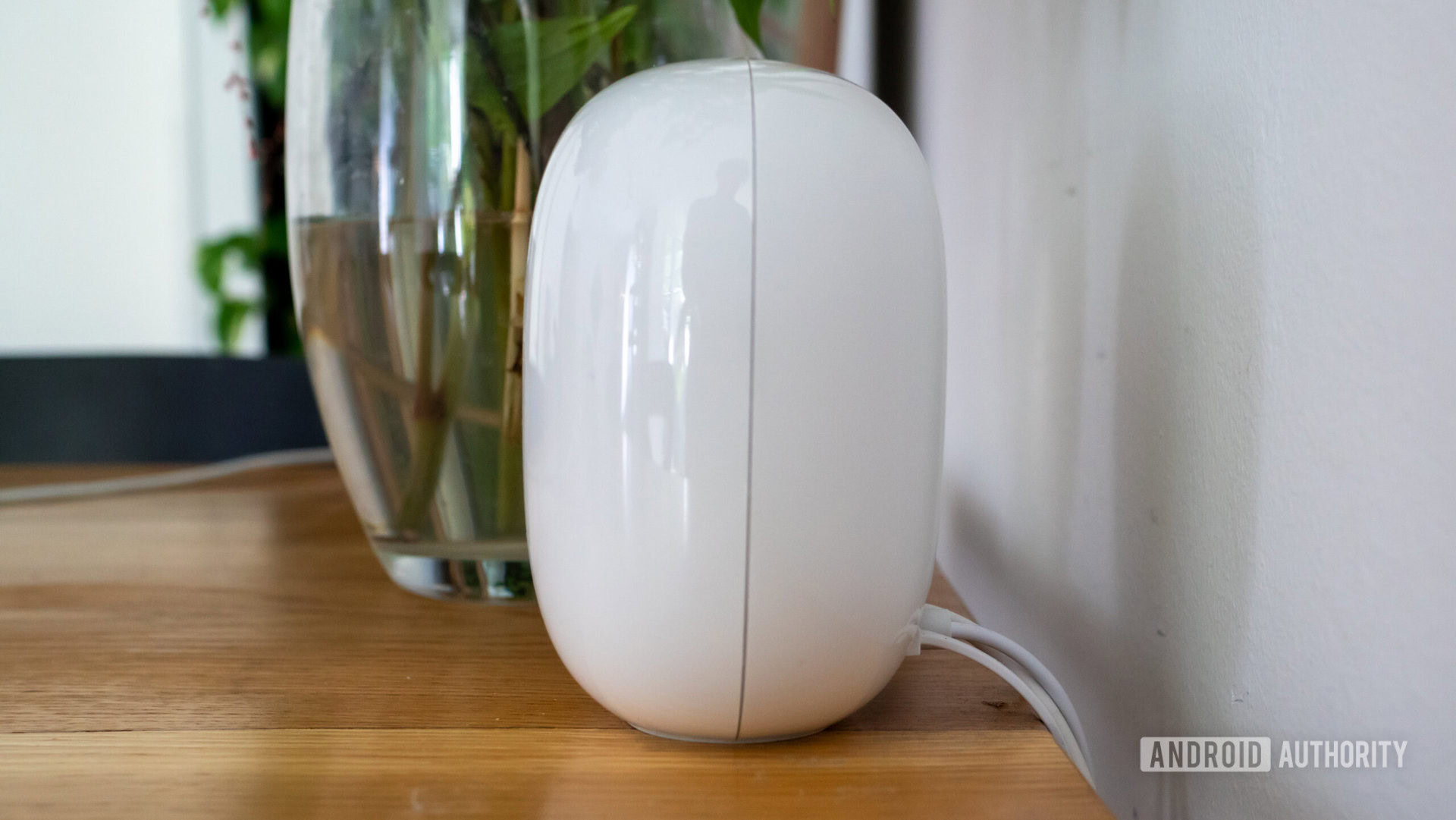
The Google Nest Wifi Pro’s simplicity and product integration aren’t the only things that stand out; it is also plenty fast. As previously mentioned, Starlink’s internet service has pretty inconsistent speeds depending on when you’re using it. Still, after over a month of use, I was able to make some observations about the speeds of the Google Wifi Pro.
Typically, my laptop tested around 180Mbps plugged into the router via ethernet, except during usage peaks, which can be unpredictable. Using the default Starlink Wi-Fi connection, I saw notably lower speeds averaging closer to 110Mbps when near the router, but the back of the house saw connections that were half of this.
The Nest Wifi Pro is plenty fast and consistent, though you will be limited to sub-gig speeds.
Thankfully, the Google Nest Wifi Pro not only provided faster speeds, but was also much more consistent throughout the house. I saw speeds in the 140-160Mbps range in the rooms nearest to my main Nest Wifi Pro device. Rooms further to the back of the house saw slower speeds of around 100Mbps on average, but this was still noticeably better than the default router could provide.
I tested plugging my main router and the secondary router together via cable, and, unsurprisingly, I saw even better performance in the back of the house. The connection then performed closer to around 150Mbps, though the front still seemed to be a bit faster.
While most of my time was spent at home, I did pack up the Google Nest Wifi Pro and test it for a few days on a much faster network at a local small-town co-working space I sometimes frequent. The connection there is a much faster 1Gbps line. I am happy to say speeds were exceptionally good here.
I typically saw speeds closest to the routers reach an average of around 850-900Mbps, though even the most remote parts of the 3,000 sq ft building saw connections well above 300Mbps. Even outside on the patio, I was able to achieve a connection of around 160Mbps. I never got a full 1Gbps out of the tests, but it gets very close. For clarification, this was during off-peak times when very few people were using the network. Even during more congested times of the day speeds remained in the 300Mbps+ range.
What’s not so good?
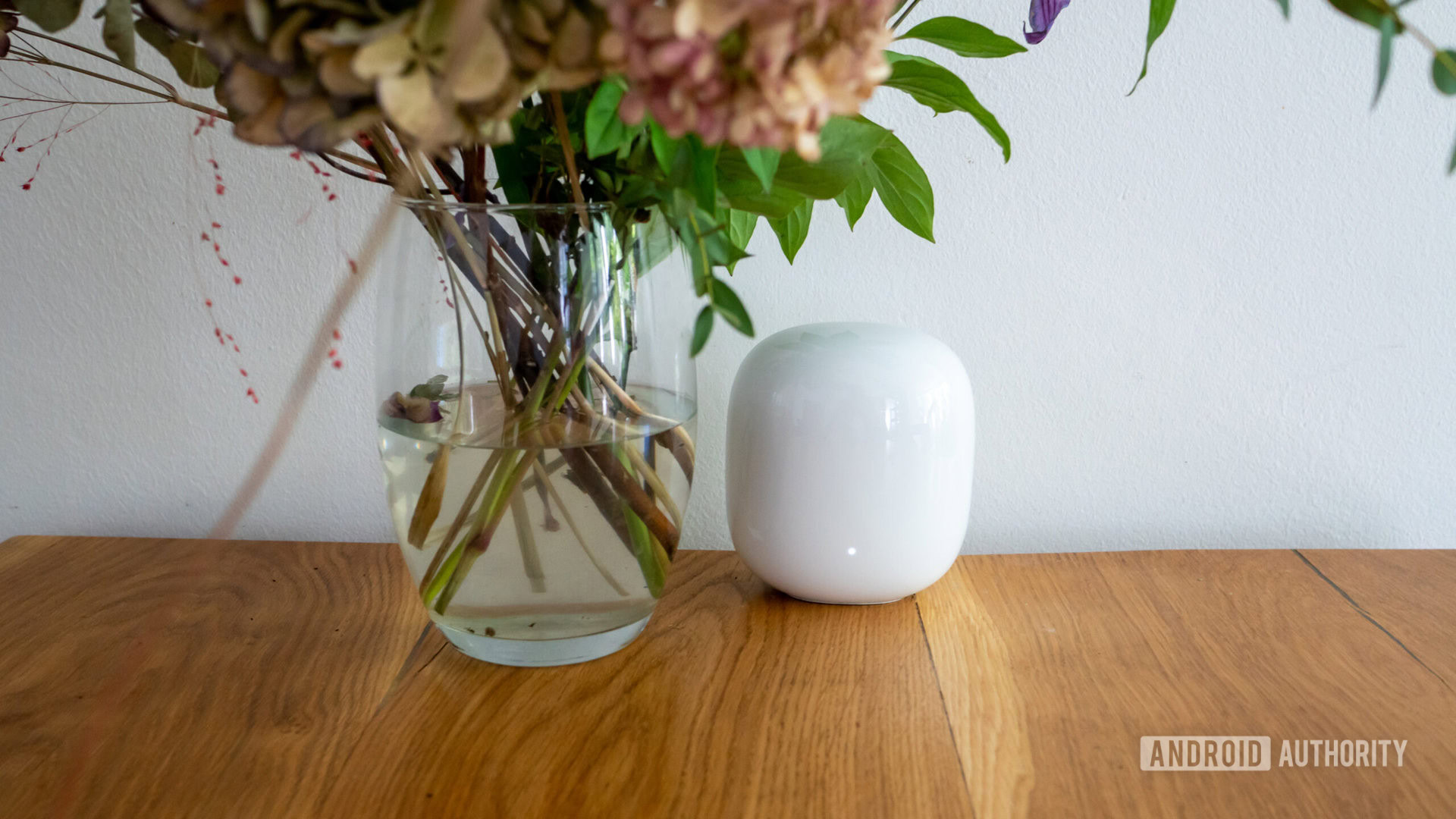
The Google Nest Wifi Pro has a lot going for it, but nothing is perfect. Over the last decade, we’ve seen a bevy of products rocking pro branding, from phones to game systems and even accessories. In some cases, the Pro really means it’s a top-notch model for professionals and power users. Other times, it’s more a branding choice. The Nest Wifi Pro fits into that latter group.
Aside from 6E support, the Nest Wifi Pro doesn’t feel particularly pro and arguably would have been better off dubbed the Nest Wifi (3rd gen) to avoid inevitable disappointment for true power users. Its setup process and app features all scream mainstream user. Even the design is clearly more mainstream and modern. The name Pro, though, could leave some to believe the Nest Wifi Pro packs more punch than it does.
As previously mentioned, Multi-Gig support is out of the question here, which is a major downside when it comes to future-proofing. But that’s not the only major advanced feature missing. While we appreciate Nest’s inclusion of single device prioritization, pro-grade routers often have the ability to set up bandwidth limits and other network restrictions per device. Google doesn’t allow this level of customization or freedom. It has a fair amount of features, it just holds your hand through all of them.
Another example of hand-holding: Nest Wifi Pro doesn’t allow splitting 2.4GHz, 5Ghz, and 6GHz into separate SSIDs. For those that don’t know what that means, essentially some routers allow every band to create a separate network — also known as a SSID (Service Set IDentifier). The reason for splitting is that it gives the user the ability to pick the fastest band possible. If you don’t split the bands the hardware automatically will determine which band your device uses. Since 2.4GHz tends to have the best strength, automatic switching will often favor it over other choices.
Don't let the name fool you. The Nest Wifi Pro is more for mainstream users than power users.
The backhaul that provides communication between the multiple Nest Wifi Pro devices is also limited only to 6GHz. Google chose this option because the 6GHz band is less congested and, therefore, in theory, can provide faster speeds. Unfortunately, if you have thick walls and other obstacles, you’ll also find 6GHz has more difficulty penetrating objects than 2.5GHz or 5GHz. In my experience, it wasn’t a deal-breaker, but those who want the best speeds possible will either want to consider another router or will want to stick to a wired backhaul.
Even the Wi-Fi 6E support is better than it sounds. My Google Pixel 6 had trouble connecting to the Wi-Fi 6E support and even when it did manage it — the speeds weren’t really noticeably different. I tested this on both my home network and my local co-working space, and in both situations, the Pixel 6 performed about the same regardless of what channel it was on.
Those who love compatibility will be a bit frustrated to learn that the Nest Wifi Pro doesn’t work with older hardware, a break in tradition from its predecessor. The reason for this is that the Pro only supports 6GHz for communication between devices, and obviously the older generation hardware lacks this. It’s understandable why Google dropped support, but it’s still a bit frustrating (and expensive) to have to upgrade every node in your house to make the switch to the Pro.
Google Nest Wifi Pro review: The verdict
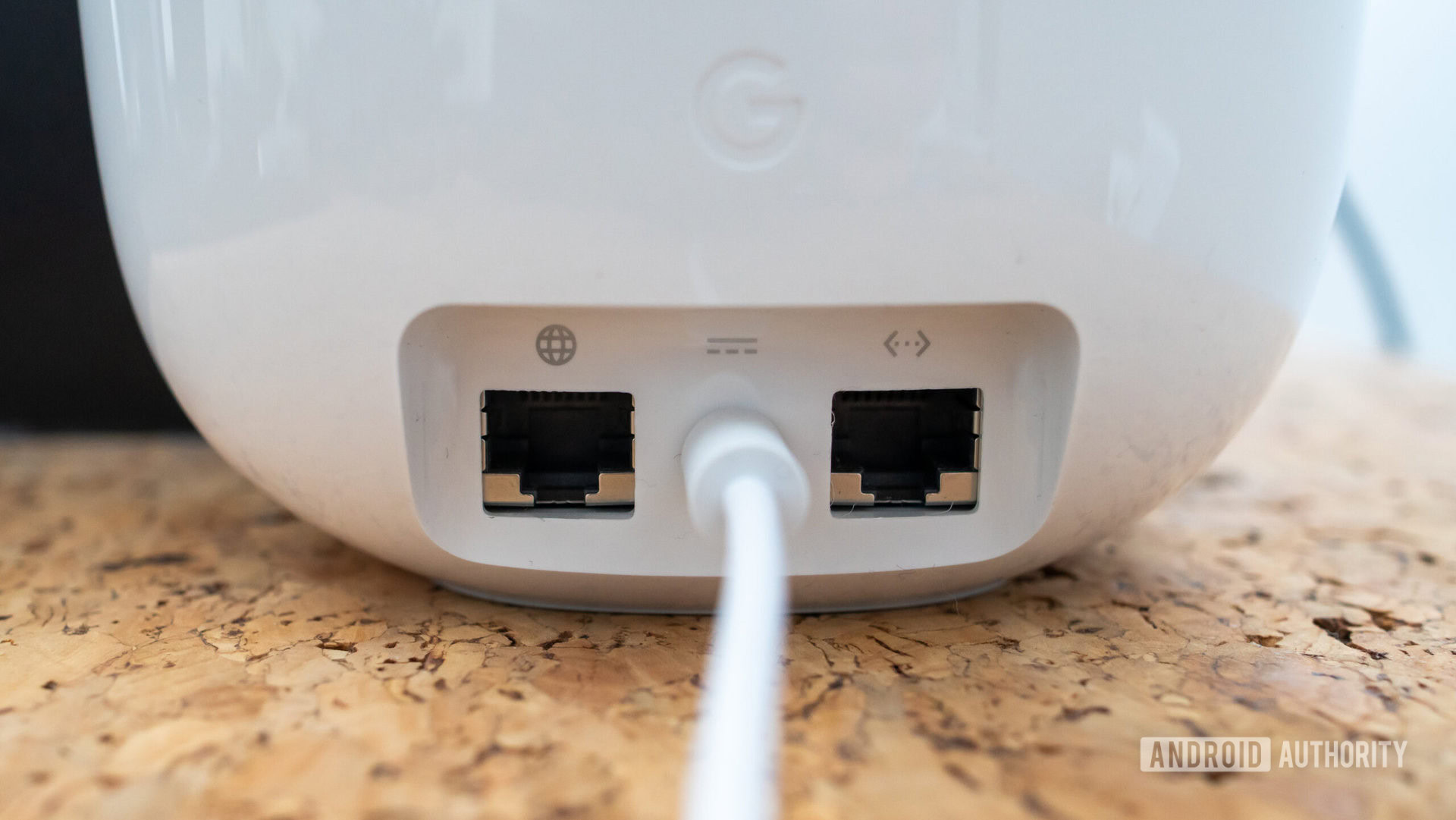
The Google Nest Wifi Pro is absolutely a great upgrade if you’re coming from an older Google router and are looking to replace your whole network with a familiar system. The same applies if you’re upgrading from anything built around Wi-Fi 5 or earlier. Just be aware that despite the misleading name, this is a mainstream router. It worked great at everything I — a non-pro user — threw at it, from gaming sessions to video calls, and required little tinkering. And that’s who this is for: those who want a nice, balanced mesh router that is easy to set up and adjust when needed.
For Pro users who need more advanced features, you’re better off considering the NETGEAR Orbi AXE11000 ($699) or Eero Pro 6E ($400). The Orbi has Multi-Gig support and tons of customization options in the settings that you just won’t get from Google but at $700 it’s far from affordable. If you want more than the Nest Wifi Pro can give but don’t want to spend a fortune, you’ll find the Eero Pro 6E 2-pack retails for $400. It can also often be found on sale for as low as $300. The Eero supports Multi-Gig connections and has a few more advanced options for power users, but it also holds some of its best features behind a paywall. Many of these same paywall features can be found free on the Nest Wifi Pro such as bandwidth prioritization, though in more limited forms than you’ll get with the Eero Pro 6E.
Don’t care about power user features? If you’re looking for a plug-and-play mesh router that just works, I absolutely recommend picking up the Google Nest Wifi Pro. It’s plenty future-proof, has solid speeds, and trounces all other budget-oriented Wi-Fi 6E routers in terms of speed and features. If you don’t care about Wi-Fi 6e support, you also have the option of picking up the original Nest Wifi ($150). You’ll lose the Wi-Fi 6/6E support but gain smart speaker functionality if add Nest Points to the network.


Top Google Nest Wifi Pro questions and answers
Unfortunately, no. The Nest Wifi Pro requires Wi-Fi 6E for communication between the different nodes, which earlier Google hardware didn’t support.
To maximize performance you can enable the 160MHz channel over 5GHz, though Google cautions that some devices are not compatible and may experience lower performance. In our testing we found it worked nice, though it really depends on if your computing devices properly support it or not.
If your main concern is using Wi-Fi 6E with newer computers and mobile devices only, no you might be disappointed. This is because, similar to the Eero Pro 6E, the 6GHz band is used mostly for communicating with the hubs, and therefore isn’t necessarily optimized for directly connecting Wi-Fi 6E devices. It’s possible, but you’ll find better performance from a higher-end (Read: $500+) Wi-Fi 6E router.